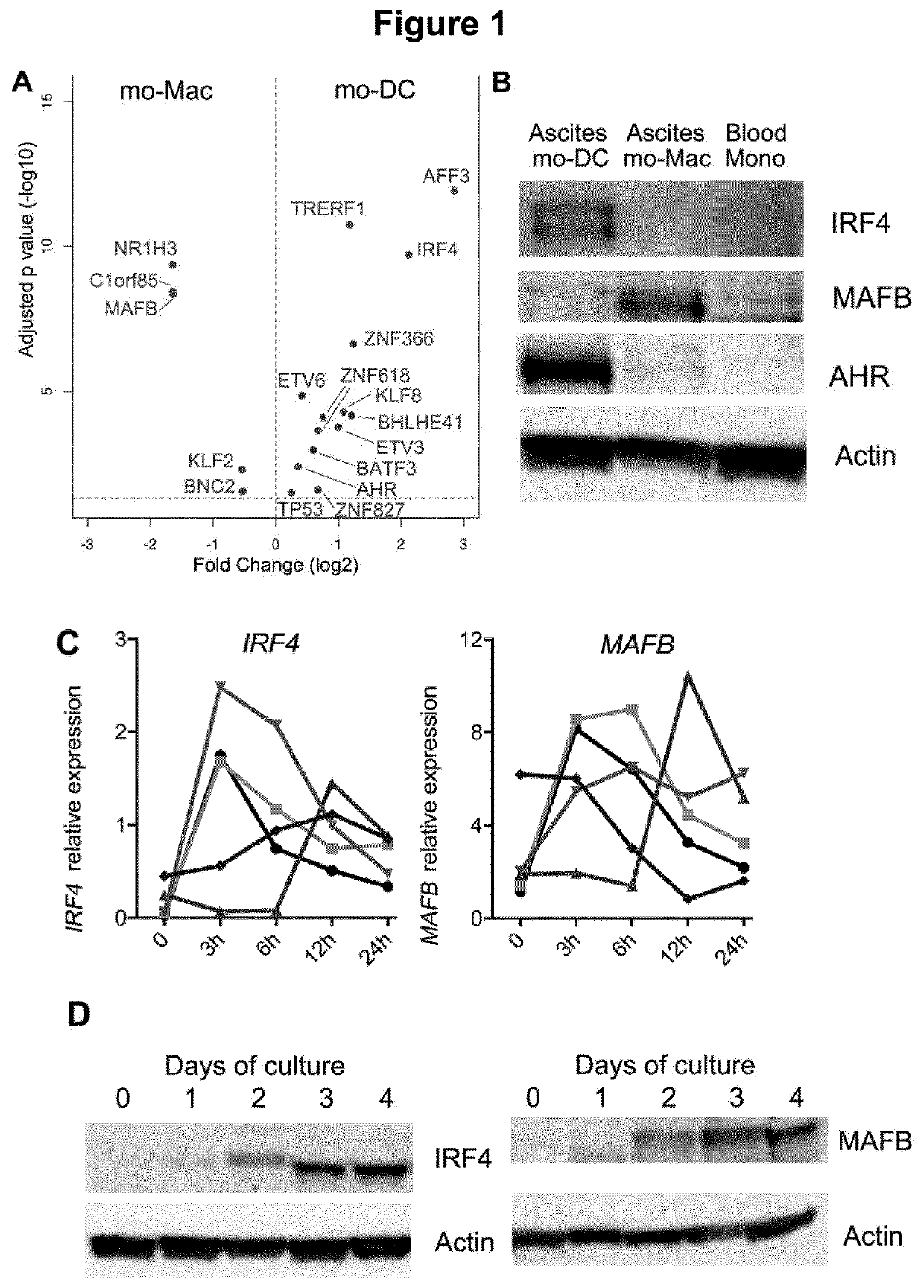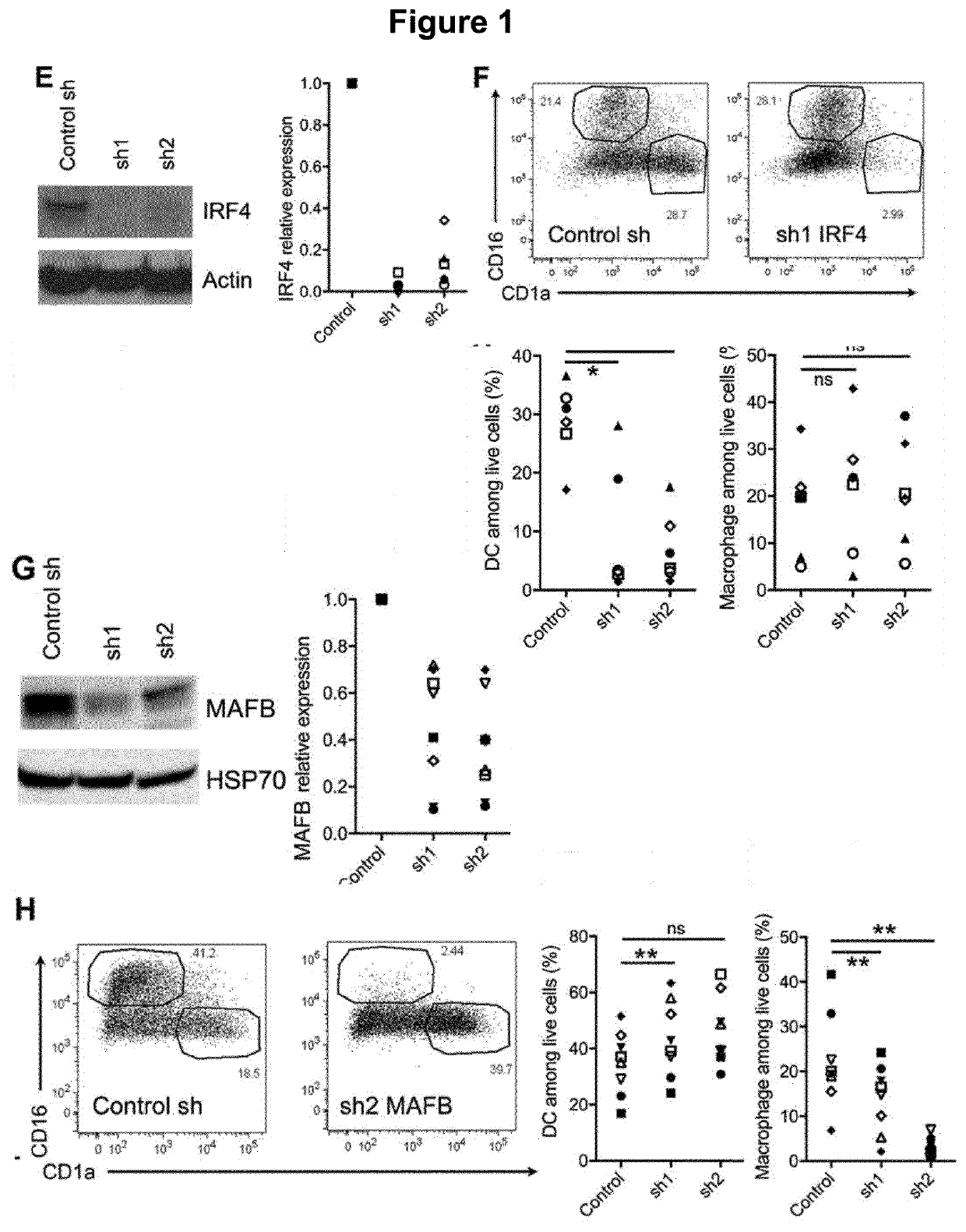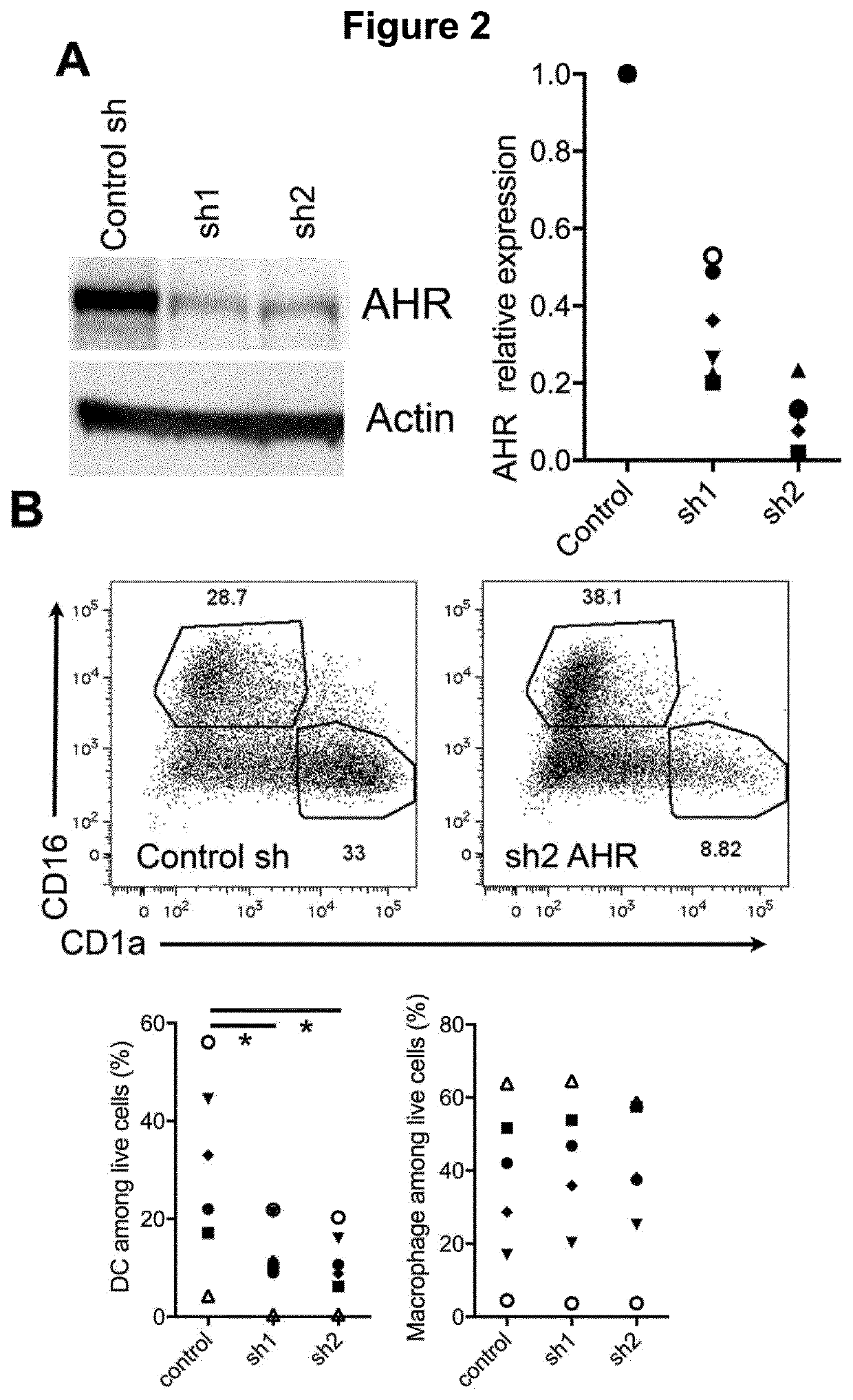Agonist of aryl hydrocarbon receptor for use in cancer combination therapy
a technology of aryl hydrocarbon receptor and combination therapy, which is applied in the field of cancer treatment, can solve the problems of undefined interaction between tumor cells and stroma after these therapies, and the inability of anti-checkpoint antibodies to induce side effects
- Summary
- Abstract
- Description
- Claims
- Application Information
AI Technical Summary
Benefits of technology
Problems solved by technology
Method used
Image
Examples
example 1
ocarbon Receptor Controls Monocyte Differentiation into Dendritic Cells Versus Macrophage
Introduction
[0150]Mononuclear phagocytes are divided into three groups: macrophages, monocytes and dendritic cells (DC). Macrophages derive from embryonic precursors whose differentiation is strongly imprinted by the micro-environment (Gosselin et al., 2014; Haldar et al., 2014; Lavin et al., 2014; Okabe and Medzhitov, 2014). By contrast, classical DC derive from pre-committed precursors that follow a pre-determined developmental program primed at an early stage, independently of their tissue of residence (Breton et al., 2016; Schlitzer et al., 2015). When entering tissues, monocytes can differentiate into either macrophages or DC (Mildner et al., 2013; Segura and Amigorena, 2013). Whether mo-DC and mo-Mac represent variations of one highly plastic cell type or distinct bona fide lineages remains unclear (Guilliams et al., 2014). In addition, what environmental cues drive monocyte fate towards m...
example 2
st Improves the Efficacy of Anti-PD1 Treatment in Tumor-Bearing Mice
Material and Methods
Mice
[0176]C57BL / 6 female mice were obtained from Charles River Janvier and maintained under specific pathogen-free conditions at the animal facility of Institut Curie in accordance with institutional guidelines. C57BL / 6 mice were maintained on a purified diet (AIN-93M, Safe diets) supplemented or not with 200 p.p.m. indole-3-carbinol (Sigma) for 3 weeks, starting when the mice were 3 weeks-old. 6 week-old mice used for tumor experiments.
Cells
[0177]B16.F10 OVA-expressing cells or MCA.101 OVA-expressing cells (Zeelenberg et al., 2008) were grown in RPMI-1640 containing 10% heat-inactivated FBS (Biowest), 100 IU / ml penicillin, 100 μg / ml streptomycin, 2 mM GlutaMAX, and 50 μM β-mercaptoethanol (all from Thermo Fisher Scientific).
Tumor Growth Experiments
[0178]Mice were injected subcutaneously in the flank with 0.5 106 B16.F10-OVA melanoma cells or 0.5 106 MCA.101-OVA cells. Tumor growth was measured t...
PUM
 Login to View More
Login to View More Abstract
Description
Claims
Application Information
 Login to View More
Login to View More - R&D
- Intellectual Property
- Life Sciences
- Materials
- Tech Scout
- Unparalleled Data Quality
- Higher Quality Content
- 60% Fewer Hallucinations
Browse by: Latest US Patents, China's latest patents, Technical Efficacy Thesaurus, Application Domain, Technology Topic, Popular Technical Reports.
© 2025 PatSnap. All rights reserved.Legal|Privacy policy|Modern Slavery Act Transparency Statement|Sitemap|About US| Contact US: help@patsnap.com



